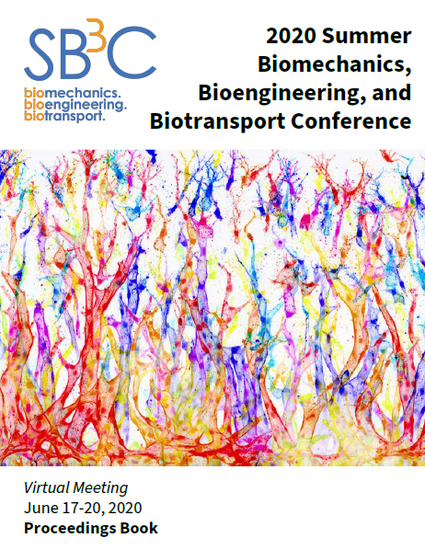
Presentation
Modeling Fatigue Failure in Fibrous Soft Tissue Using Continuum Damage Mechanics
Summer Biomechanics, Bioengineering, and Biotransport Conference
(2020)
Abstract
The meniscus is a wedge-shaped fibrocartilaginous tissue located between the femur and tibia that plays a crucial role in joint health. By distributing large and repeated loads, the meniscus reduces localized regions of stress that can damage the underlying articular cartilage, increasing the risk of osteoarthritis. Unfortunately, the meniscus is frequently injured, and one probable failure mode is repeated exposure to low-magnitude tensile loads, known as fatigue. While the study of fatigue in conventional materials has been transformative to the engineering and maintenance of durable polymers and composites, there is a fundamental lack of knowledge on the structural mechanisms of fatigue failure in fibrous soft tissue. One approach to gain physical insight into fatigue mechanisms is through mathematical constitutive models that predict and describe material damage. These models can avoid the expense and time required for experimental fatigue studies, but they also must be calibrated and validated using experimental data.
A limited number of constitutive models have been developed and validated to simulate the damage processes of soft biological tissue. These models include the use of continuum damage mechanics (CDM), pseudoelasticity, and elasto-viscoplasticity to account for stress softening and permanent set effects. Notably, most of these models have been validated with experiments that use displacement-control loading, where a cyclic strain is applied and stress reduces overtime. A loading condition that is more physiological to joint kinetics and fatigue injury is repeated application of a targeted stress (force-control). However, to our knowledge, no computational study has modeled force-control fatigue data in the meniscus, or any other musculoskeletal soft tissue. The objective of this study is to determine the feasibility of using CDM to predict experimental fatigue behavior during force-control loading of human meniscus.
Disciplines
Publication Date
June 19, 2020
Location
Virtual
Citation Information
Bradley S. Henderson, Katelyn F. Cudworth, Danielle N. Siegel, Madison E. Krentz, et al.. "Modeling Fatigue Failure in Fibrous Soft Tissue Using Continuum Damage Mechanics" Summer Biomechanics, Bioengineering, and Biotransport Conference (2020) Available at: http://works.bepress.com/trevor_lujan/54/
